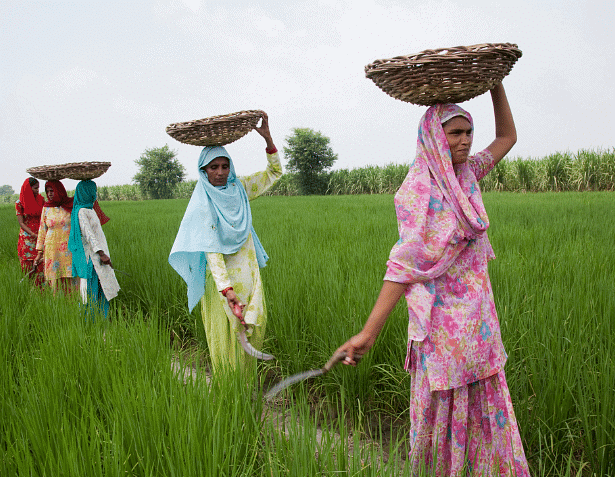Rural Livelihoods Class 6 Worksheet Civics Chapter 7
 Q1: Fill in the blanks.
Q1: Fill in the blanks.
(i) Ramalingam has __________ acres of paddy fields in Kalpattu.
Ans: twenty
(ii) Only ___ percent of India's farmers are like Ramalingam.
Ans: 20
(iii) The people of Chizami village do __________ cultivation.
Ans: 'terrace'
(iv) In India nearly ______ out of every five rural families are agricultural labourer families.
Ans: two
(v) People of Pudupet earn their living by ________.
Ans: fishing.
Q2: True / False
(i) Thulasi earns Rs 40 per day.
Ans: True
(ii) Thulasi sold her cow to pay back the money she borrowed from Ramalingam for her daughter’s treatment.
Ans: True
(iii) Weaving is a farm activity.
Ans: False
(iv) Sekar has a hybrid cow, whose milk he sells in the local milk cooperative.
Ans: True
(v) Sekar takes loan from bank and buys seeds and fertilizers.
Ans: False

Q3: Answer the following Questions
(i) How much land does Ramalingam have?
Ans: He has twenty acres of paddy fields in Kalpattu.
(ii) Why did Thulasi borrow money from Ramalingam?
Ans: Thulasi borrowed money from Ramalingam for her daughter’s treatment.
(iii) What work does Sekar do at Ramalingam’s rice mill?
Ans: Sekar helps Ramalingam collect paddy from other farmers in the neighbouring villages.
(iv) How much land does Sekar have?
Ans: Sekar owns only two acres of land.
(v) What is special about Chakhesang community?
Ans: The people of Chakhesang community do 'terrace' cultivation.
(vii) Why does Sekar need to earn some extra money?
Ans: Whatever he earn from selling paddy last only for eight months. So he needs to earn some extra money.
(viii) What does Raman do when he gets no work on the farm?
Ans: When there is no work on the farm he finds work outside, either loading sand from the river or stone from the quarry nearby.
(ix) How Thulasi and her husband managed to pay back the loan to Ramalingam?
Ans: They had to sell their cow to pay back the money they borrowed from Ramalingam for their daughter’s treatment.
(x) Where is the Chizami village located?
Ans: Chizami village is in Phek district in Nagaland.
(xi) Fishermen go far into the sea. Why?
Ans: Fishermen go far into the sea so that they can get a better catch.
(xii) How does Sekar pay back the loan to traders?
Ans: To pay back his loan he has to sell his paddy to the traders at a somewhat lower price than what he would get in the market.
(xiii) Why often farmers like Sekar needs to borrow money from moneylenders?
Ans: Very often farmers like Sekar need to borrow money to purchase basic things like seeds, fertilizers and pesticides.
(xiv) What does Ramalingam do with the paddy grown on his land?
Ans: Ramalingam uses the paddy grown on his land to produce rice in his rice mill and sells the rice produced to traders in nearby towns.

(xv) What are the important sources of livelihood for the people in rural areas?
Ans: Apart from farming, many people in rural areas depend upon collection from the forest, animal husbandry, dairy produce, fishing etc.
(xvi) What kinds of work do agricultural labourers do?
Ans: All of them depend on the work they do on other people's fields to earn a living.
(xvii) How do fishermen survive during the monsoon?
Ans: During these months fishermen survive by borrowing from the trader.
(xviii) What is the main crop that is grown in Kalpattu village?
Ans: Paddy is the main crop that is grown in Kalpattu village.
FAQs on Rural Livelihoods Class 6 Worksheet Civics Chapter 7
| 1. What are rural livelihoods? |  |
| 2. How do rural livelihoods contribute to the economy? |  |
| 3. What are the challenges faced by rural livelihoods? |  |
| 4. How can rural livelihoods be improved? |  |
| 5. What is the importance of sustainable rural livelihoods? |  |

















